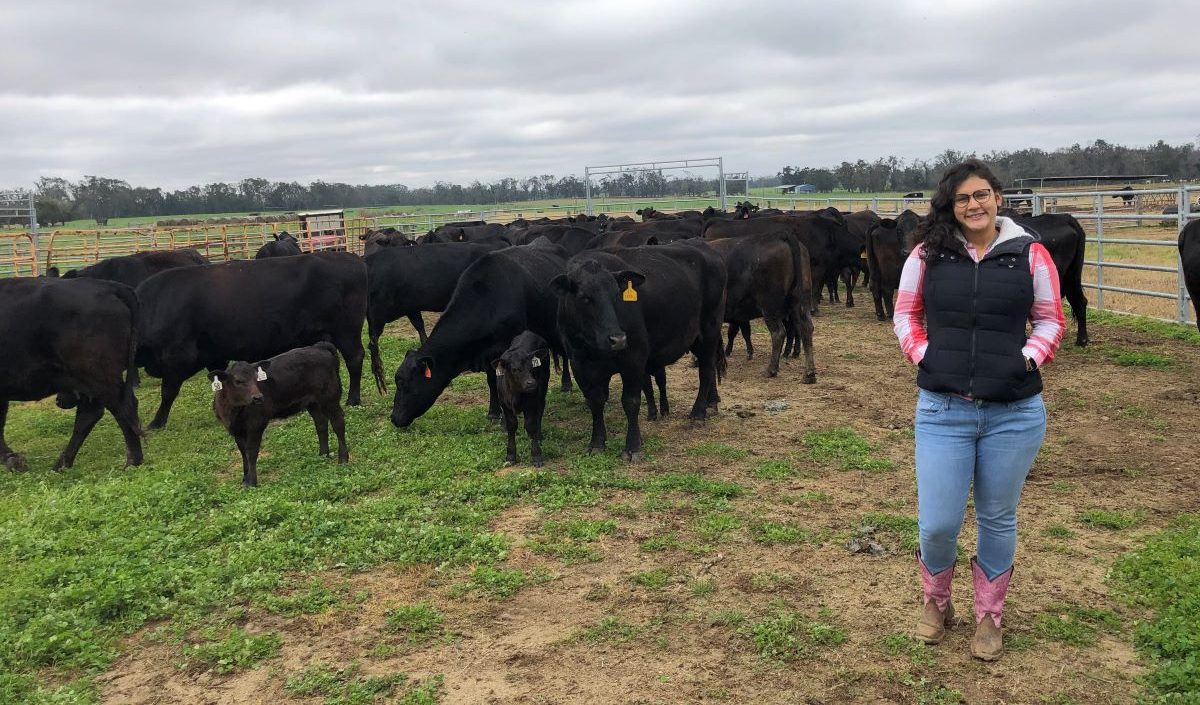AB Direct - Steers
Rail: 496.00-500.00 del
AB Direct - Heifers
Rail: 496.00-500.00 del
US Trade- Steers
Rail: 368.00-370.00 (IA, NE)
US Trade - Heifers
Rail: 368.00-370.00 (IA, NE)
Canadian Dollar
0.22

ABP Research Showcase Highlights | Connecting feed efficiency to weather resilience
This is the first in a series of articles highlighting a selection of ABP-supported research projects that were featured at our Research Showcase in February 2023.
When Gleise Medeiros da Silva arrived at the University of Alberta after finishing her Ph.D. in Florida, she was frequently asked how she would survive Edmonton’s frigid winters.
This prompted Silva, assistant professor in the Department of Agriculture, Life, and Environmental Sciences and the Beef Cattle Research Council-Hays Chair in Beef Production Systems, to consider the impact of harsh winters and increasingly hot summers on cattle in Western Canada.
“Our animals are actually more prone to some degree of environmental stress throughout the year,” said Silva, presenting at the Alberta Beef Producers’ Research Showcase in February.
“That can translate (to) impaired health…or reduce that animal’s well-being, and that is really important because the predictions are that you’re going to have more extremes in the next years.”
In terms of monitoring heat stress in cattle, for example, behavioural modifications such as seeking shade and not grazing are easy to spot. But other effects, such as hormonal changes, are harder to identify, Silva explained. Compared to dairy females, where milk production is always measured, impacts of stress on production in beef females may not be as closely monitored.
Much of the existing research in this area focuses on heat stress, indicating its negative impacts on health, production, and behaviour. There is less information on environmental stress pertaining to cow-calf production on pasture, and the relationship between environmental stress and feed efficiency is not fully explored.
“One of the explanations for low residual feed intake animals are their capability to thermoregulate their body temperature, and also is related with physical activity, which can be related to how much those animals can graze, how far they can go when it’s really hot,” said Silva. “That is this relationship between thermotolerance and feed efficiency.”
Continues below video.
Feed efficiency and weather resilience study in progress
To delve deeper into this topic, Silva is studying how heifers with differing feed efficiency respond to extreme summer and winter weather conditions in Alberta. Silva and the other researchers involved hypothesized that heifers with greater feed efficiency are more resilient to extreme weather due to an energy utilization that allows for higher performance.
To begin, 49 crossbred heifers underwent an 80-day feed efficiency trial at the U of A’s Roy Berg Kinsella Research Station in Spring 2022. Silva and her team identified 23 heifers with low residual feed intake and 21 heifers with high residual feed intake to be used in the summer and winter trials. The heifers were sourced from the same herd and chosen for their black coats, which absorb more heat.
In Summer 2022, the selected heifers were monitored on pasture for 42 days, with their behavioural and physiological responses recorded along with the daily temperatures and weather conditions. The animals were outfitted with pedometers to measure their movement and time spent resting, and rumen boluses were inserted to record body temperature. Weights and blood samples were taken every 14 days. This data is currently being analyzed, Silva reported.
The winter portion of the study, which began in January, also monitors the heifers’ body weight, behaviour, blood parameters, and body temperature. The trial will conclude in March, and results are forthcoming.
This study is partially funded by Alberta Beef Producers. To learn about more ABP-supported studies and find fact sheets for completed and in-progress projects, visit our Research and Development webpage.


